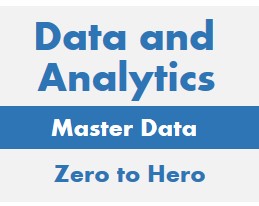


A successful data and analytics project requires a successful beginning, middle and end. It is part of the Data and Analytics Methodology.
Rolling out the data and analytics solution consists of a number of steps. Follow these steps and you're more likely to have success.
Prepare an announcement that shows business users and others the benefits that they can expect from the business intelligence and data warehousing system. When these stakeholders understand how the new system can help them, they are more likely to be supporters instead of detractors. You need all of the supporters that you can get.
Documentation is also critical to successful data warehousing roll-out. Some of these documentation items include:
Capacity planning and performance testing are also important parts of the pre-deploy step. Capacity planning helps to determine the computer resources that will be needed. Performance testing tests the load on the computer hardware and software to make sure that they can perform required activities in a timely manner as needed by the business. Finally, we recommend running a test in the production with a full database.
Sometimes a deployment does not work as expected. In that case, be prepared with a rollback and fallback plan to respond to this contingency. A fallback plan should be in place so that the business can continue in cases of problems.
The new data warehousing and business intelligence system will need to be configured and administered. Be ready for this important function. You need to answer questions such as:
A training plan is important to success. It should emphasize benefits to the trainees. This will raise their interest level and their focus as well as help to get them to get on board with the new system. The training plan should:
Training will also be needed for the follow-up phase. This will include training of users a wider scale and support of the system in an ongoing fashion.
We recommend a pilot deployment. That is a deployment to a select group, probably power users or those in a particular department or division. Successful projects avoid a "big bang" approach which attempts to roll out the system to a large audience in a single deployment. This is asking for trouble. Instead start small using a pilot and obtain feedback.
You will be learning from the pilot deployment. Add this information to the FAQ. This approach will head off future questions enabling quick answers and smoother operation. Also changes to the system may be required. Be ready to make adjustments in the system in response to results of the pilot deployment.
A phased deployment may work well for your organization. It may start in one department and then extend to more departments. Or as we said before, start with power users who in turn train other users and expand use of the system.
<There are a number of ways of that training can be delivered. One way is through brownbag lunches. This leads to informal, friendly discussions with business people and other stakeholders. Brownbag lunches will enable them to ask questions and get immediate answers. These sessions are also a great source for feedback.
Webinars are another effective method of training for business intelligence and data warehousing. They are available through the Internet or you may create these training sessions yourself. Webinars are very helpful when the people to be trained are spread out geographically. For example, you may have users in both Kansas and California. In that case, a webinar is a great way to obtain or provide training.
The data warehousing systems support people also need training. They have distinct task that are different from the business users. They need to be ready to carry out operations such as backing out data or correcting problems.
Administrative support people will require training will be needed for that function as well. The administrators will be configuring the system to make it more responsive. They will also be doing functions such as adding new users or doing reports.
The business intelligence system does not run by itself. The business and other stakeholders will require ongoing support to have a successful system. A help desk that can be accessed by telephone or e-mail is a good way to provide follow-up support. The help desk can be equipped with trained people ready to answer questions in the FAQ and beyond.
A successful business intelligence system will gain in demand and its users will want to do more advanced work. Follow-up training will help with this process. The training can show advanced techniques. In addition, new people may be joining the group of users, so earlier training sessions may need to be repeated for this audience.
It is important to measure the success or failure of a program like the business intelligence / data warehouse program. To do this we must follow-up with the customers, those who are using the system. The following kinds of follow-ups and questions are helpful:
Infogoal.com is organized to help you gain mastery.
Examples may be simplified to facilitate learning.
Content is reviewed for errors but is not warranted to be 100% correct.
In order to use this site, you must read and agree to the
terms of use, privacy policy and cookie policy.
Copyright 2006-2020 by Infogoal, LLC. All Rights Reserved.
